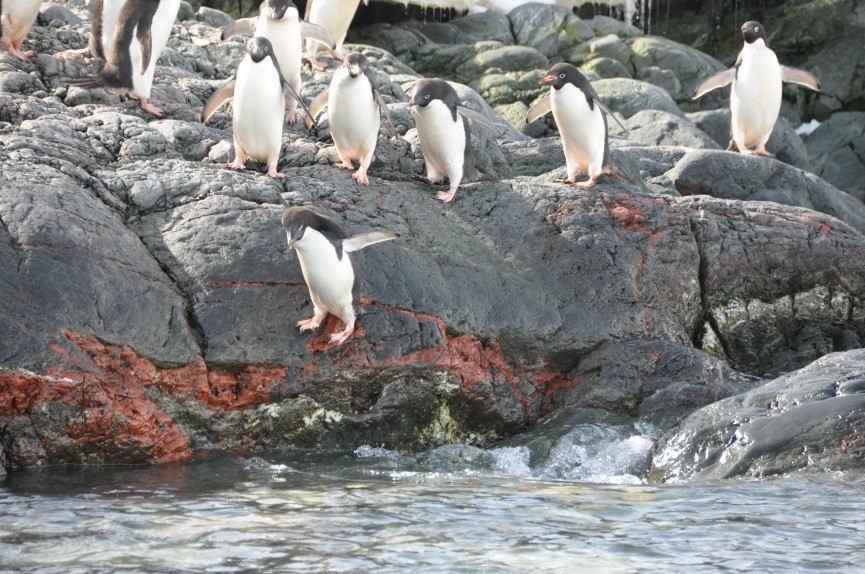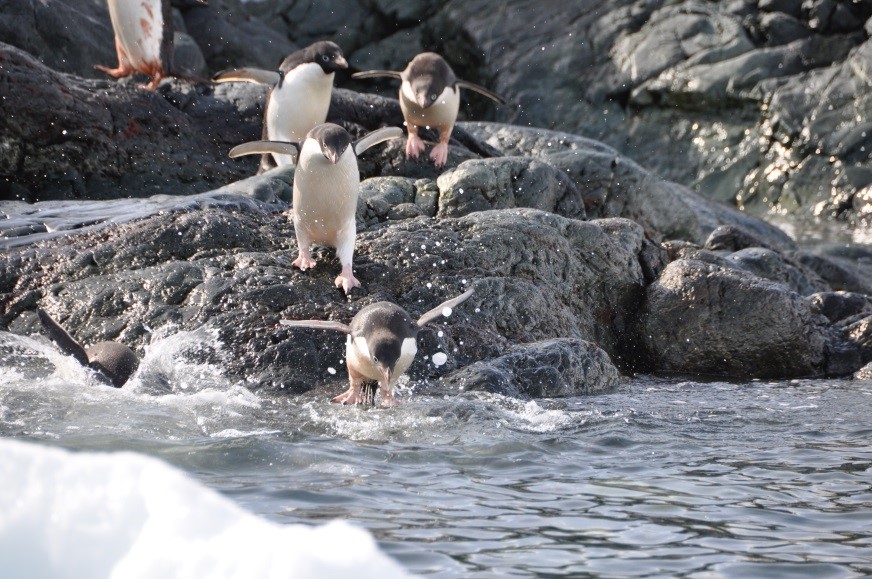RECENTLY, I watched a lecture that addressed the impact of global climate change on the future of Australia’s Wet Tropics World Heritage Area.
Up here in the north of Queensland, we have the highest mountains in the state, including Mt Bartle Frere (1622 m) and Mt Bellenden Ker (1593 m). Bellenden Ker has an annual rainfall of over 8 metres and in winter the mountaintops can be very cold (by North Queensland standards) – on one dry-season June hike towards the top of Bartle Frere, we were soaked by a modest 250 mm of rain and retreated from the risk of hypothermia.
The unique and isolated environment of these mountaintops has driven the evolution of organisms that are found nowhere else, including Australia’s only two species of rhododendron and a wide range of animals: dung beetles, freshwater crayfish, golden bowerbirds, and the lemuroid possum. As our climate warms, both the cloud base and the temperature on the tops of these mountains are rising, with the consequence that the world of these unique organisms is starting to shrink.
Such species have nowhere to go. They cannot jump or fly to a higher peak, and they cannot descend into a hot and dry environment to move horizontally to the nearest high altitude cool and wet climate, perhaps thousands of kilometres away. It seems likely that many of these species are doomed to extinction when climate change “pushes them off the top” of their mountains (here and here).
As I contemplated this presentation, I was reminded that just before the COVID-19 pandemic erupted, while writing an earlier article on the role of complexity in disasters, I discovered that theoreticians have long used the metaphor of mountainous terrain to better understand and describe the evolutionary processes of change over time. The term “fitness landscapes” was first used by Sewall Wright in his 1932 article The roles of mutation, inbreeding, crossbreeding and selection in evolution.
While the mathematical modelling of fitness landscapes is way beyond my abilities, most of us can imagine species and ecosystems as dynamic landscapes (here and here). Whether organisms, communities or complex ecosystems, entities are represented by an imaginary surface of all their possibilities, with peaks matching the versions that are most fit for the moment and will be enhanced by evolutionary success. In our dynamic world where environmental conditions are ever-changing (albeit at varying rates), overall fitness is contextual and transient. And species like us that are both dependent on the environment in which we live and potentially agents for its disruption may become a threat to our own fitness and survival – in our case both too smart and not smart enough.
Try imagining the dynamic fitness landscape of SARS-CoV-2 where we are the reactive substrate on which it lives.
For organisms on mountaintops in North Queensland, the landscape is both literal and metaphorical. As rapid global warming changes their environment, they are literally unable to move to a physical peak where they can persist in their current form (although rhododendron growers have transplanted some specimens to southern Australia). Metaphorically, it seems unlikely they can evolve by natural selection rapidly enough to move to an emerging peak in their fitness landscape that enables them to survive the environmental changes of their mountaintops – heat-intolerant lemuroid possums have not been seen for a several years.
The fact that all organisms alive today have descended with continuity from the first life form that emerged on a very different version of our planet is proof that change is possible; however, those lines that have become extinct are a demonstration that successful change is not a given.
The challenge for all species (and societies) is to be able to adapt to changing circumstances and maintain continuity of success as a sufficient fitness peak. When adaptation produces significant changes in physical appearance or physiology (behaviour and culture), the consequence is the evolutionary appearance of novel species (social systems), a selective process that includes the disappearance of prior iterations.
Human social systems have experienced halting journeys that are not dissimilar to biological evolution and we can use the concept of landscapes as metaphors to help us better comprehend the evolution of our complex social and behavioural systems. Viewing ourselves topographically, as a three-dimensional surface of fitness in terms of our sociocultural, environmental and economic state, means recognising that between peaks of fitness, our community may also experience plains of mediocrity and valleys of disorder, or even fall into an abyss of total collapse.
We humans like to think we are different. We believe that we have the capacity to anticipate the future and plan journeys of escape and transition. However, most often we have not planned to be where we are, do not understand what brought and keeps us here, and are unsure where we would rather be. And, if we think we know what we would prefer, we are uncertain how we might get there.
For societies trapped by their cultural inability to change on a subsiding peak of fitness in a landscape that they themselves have destabilised, there is a not insignificant risk that they will find themselves isolated and with nowhere to go (here and here).
As examples, this pandemic and global climate change are issues affecting our fitness peak, and both can be understood as challenges to us to actively transform our culture and behaviour in pursuit of stability for our future.
The less complex and most immediate challenge is how we Australians can make the transition to living with the virus for the long term. Driven by our fears of a severe outbreak of disease, we adapted our individual behaviour and our political and social responses to create a temporary refuge of relatively high fitness with low morbidity and mortality, and what was deemed to be an acceptable level of social disruption. However, this is beneficial only for the period of the development and roll-out of effective vaccines, and has been bought at a cost to longer term economic and social harmony that cannot be sustained indefinitely.
As soon as the benefits of this strategy are outweighed by the harm, we should move on deliberately from our temporary refuge to a more secure place. If we don’t, we will be forced to act anyway when the virus inevitably penetrates our communal defences. Either way, eventually we will make the relatively simple (almost two-dimensional) cultural journey to a landscape peak whereon we live in a sustainable relationship with SARS-CoV-2.

Adelie penguins wary of entering the water for fear of leopard seals while knowing they must do so in order to feed their chicks – of course none wants to be first to dive in. Photo: Will Cairns.
To summarise our current position: the slower the vaccine roll-out, the greater the cumulative risk that the morbidity and mortality of the virus will become established here in spite of our isolation; the longer the delay in transition to an opened community, the greater the long term social and economic harm. Our journey of behavioural transition must start as soon as those who are willing have been vaccinated as rapidly as possible. Those who are reluctant to be vaccinated should be warned about when the transition will start so that they have the opportunity to reassess their risk.
Most of us recognise that journeys of change can be hazardous. However, outcomes may be far worse when our inherited and learned aversion to risk in pursuit of perceived self-interest causes us to baulk at even starting.
Fortunately, while the overestimation of immediate personal risk may offer us an individual survival advantage in response to immediate threats, we also have evolved (cultural and biological) responses that weigh our longer term overall individual interests, and those of our family and our community. The recent increase in the uptake of vaccines in Victoria and the Sunshine Coast in Queensland in the face of the increasing awareness of both immediate and longer term threats demonstrates that we can overrule our immediate responses and respond to threats to our broader community – evoking consideration of both penguins and Kahneman’s Thinking, fast and slow.

Photo: Will Cairns
The far more complex and multidimensional problems of global climate change and ecosystem degradation are generating a vast range of risks and countless uncertainties. Many of us are clinging on to the sides of our rapidly shrinking island of fitness, fearful of the unknown and reluctant to abandon behaviours, values and the perceived certainties that have served many of us well over a long time.
While we may be unsure about where we should be heading and where we may end up, we have a vast array of hard evidence that the consequences of not acting will be calamitous. Unfortunately, the longer we procrastinate, the more rugged the terrain and the greater the human cost over the course of the journey – we should set off long before the waves are lapping at our ankles, both literally and metaphorically.
The question remains whether we, and our evolved social institutions and the politicians that they deliver up to us as leaders, can grasp the scope and scale of the issues and are capable of making the hazardous journey necessary to restore our fitness. The answer will reveal whether our biological and social evolution has made us as smart as we might think we are.
If we cannot, humanity will remain simply subordinate to the processes of natural selection. And, like so many civilisations of our past (but never before on a global scale), we may discover that our peak of fitness has eroded away altogether, leaving us staring into the abyss of collapse.
Dr Will Cairns OAM is Consultant Emeritus at Townsville University Hospital and Associate Professor at James Cook University.
The statements or opinions expressed in this article reflect the views of the authors and do not represent the official policy of the AMA, the MJA or InSight+ unless so stated.

 more_vert
more_vert
We are more worried about dolphins and penguins than the cloloured and linguistically diverse community that suffers in every ‘western’ country (even if they are in south-east like us). Racial inequity is the cause of all evil including climate change. If you exercise thought it will become apparent.